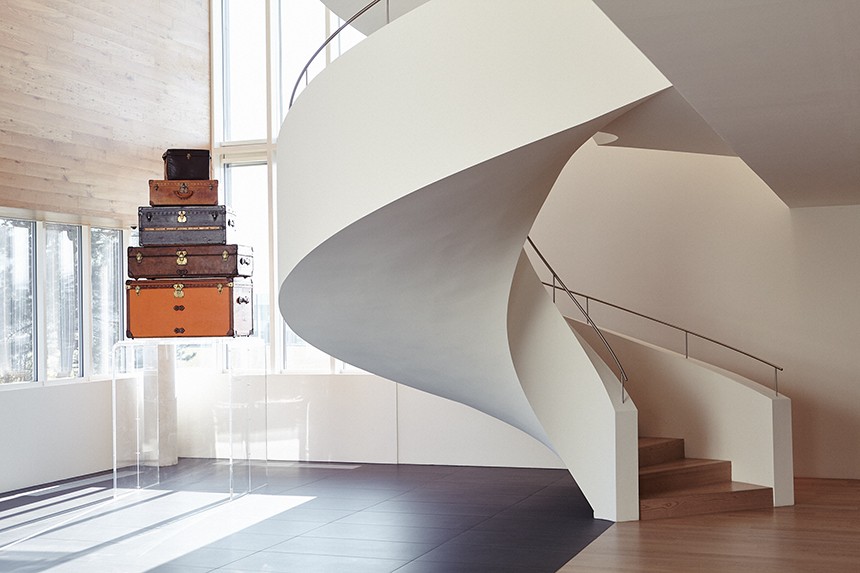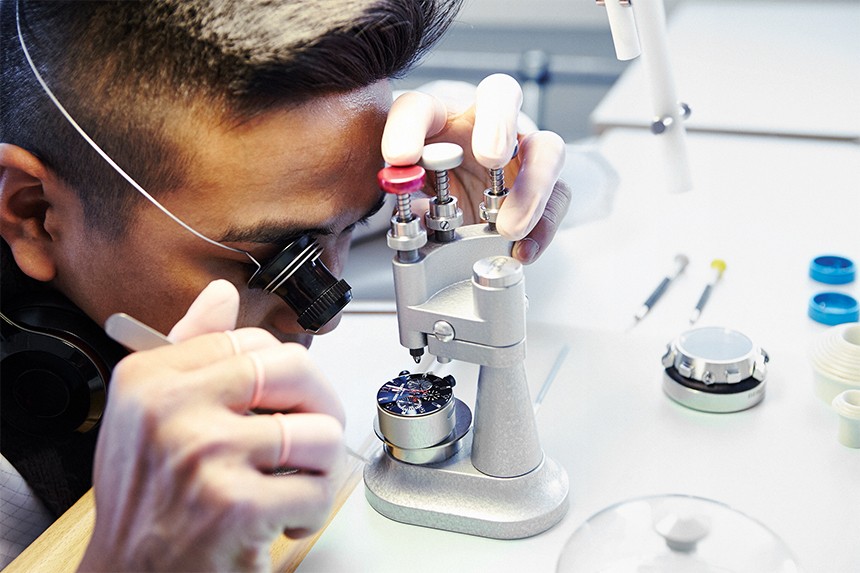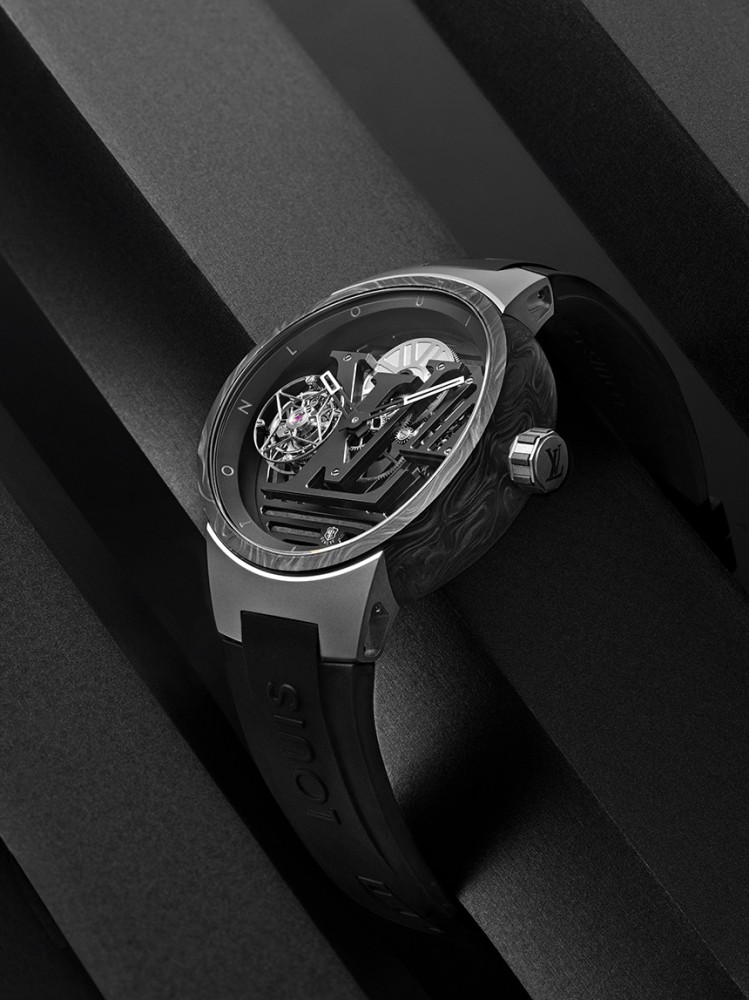Many fashion brands today are adept at creating a trending moment, a passing scene and, if ambitious enough, an ephemeral world to call their own. When it comes to Louis Vuitton, a world is not enough.
Louis Vuitton’s secret world of watchmaking
A tour through Louis Vuitton’s extraordinary watchmaking facilities in Geneva
By Elio Iannacci - April 21st 2021
For more than 165 years, the French fashion house has been devoted to creating a complete universe—one which represents an ecstatic and expansive constellation of luxury goods. Founded in 1854, Louis Vuitton’s consistent attention to detail and quality has always been front and center and the house’s key offerings—which range from fragrance to luggage—have moved with the times. This is why it made so much sense when Louis Vuitton started designing luxury watches in August of 2002. That was when the house announced the debut of its Tambour watch—a timepiece now coveted by watch aficionados as a collectible. Through the Tambour’s many design iterations, Louis Vuitton has changed the status quo of watchmaking altogether.
Much of this can be credited to the small but mighty team at La Fabrique du Temps Louis Vuitton. Located in Geneva, the watchmaking capital of the world, La Fabrique du Temps Louis Vuitton can best be described as part atelier, part studio and part laboratory. Led by Michel Navas and his partner, Enrico Barbasini, a barrage of innovations have been hatched, developed and tested on site. “In many ways, we want to break all the molds,” says Navas. This is why, for years, Navas has continued to foster La Fabrique du Temps Louis Vuitton as a place where new blood, fresh minds and experimental spirits converge.

Leave it to Navas to know the ins and outs of this old-world tradition. Before he learned how to drive a car or shave, he could point out the difference between an hour marker and a sub dial. His father, a longtime, dedicated watchmaker, took him under his wing and introduced him to hundreds of watch brands. All those hours of watch talk at the dinner table has pushed Navas to dream big.
“My mission with Louis Vuitton was to find a different way to display time,” Navas says of his goals. “We started with something I’m proudest of—a new model called Tambour Spin Time, which displays hours with little cubes rotating and a little hand displays the minutes.” Configuring the extra space surrounding each of these floating time cubes on the Tambour Spin Time model is a technical feat. The fine machining of the movement must be meticulously accurate as the slightest variation from perfection can throw the whole dial display out of order.
As pioneering as the innovations coming out of La Fabrique du Temps Louis Vuitton are, Navas insists that every act of invention is deeply considered and never rushed. For example, one of Louis Vuitton’s most celebrated models of late is a timepiece called the Voyager Minute Repeater Flying Tourbillon. The Minute Repeater allows the owner to not only read time visually, but also to hear it via music. It can be regarded as a portable mini- orchestra: A low note is sounded for the hours, a double low-high note for the quarter hours, and a high note for the minutes. This level of intricacy has made this Voyager one of the most laborious pieces Louis Vuitton has ever released.
“It takes more than 320 hours to create,” Navas, says of this Voyager model, stressing the fact that absolutely none of Louis Vuitton’s watches are part of any kind of assembly line of execution. “There are only 80 people in La Fabrique du Temps and 15 of them are watchmakers—all our dials are made in-house,” he explains. “One watchmaker must start and finish the watch creation for consistency so that the sound of it is uniquely adjusted.”

Louis Vuitton’s latest watch, the Tambour Curve Flying Tourbillon Poinçon de Genève hails another achievement for the brand. First off, the sleek design of the watch—replete with a bold logo in its center and a multitude of architectural and graphic cues and lines—escapes all expectation. Aside from its striking looks, there is so much engineering embedded into the design.

“The Tambour Curve is a milestone for Louis Vuitton,” says Navas. “This is the first time Louis Vuitton will use new materials like titanium and special carbon fiber,” he explains. The carbon used to make the watch—which looks like a beautiful dark wood—is specially made for Louis Vuitton. Mixed with the chrome and silver palette circling the face, Navas says the space-age feel is far from a coincidence.
“If you look in the aeronautic world, this watch has different layers of carbon taken from that system, so each watch and each case are unique.” The Tambour Curve Flying Tourbillon’s own inspiration is also unconventional, as its muse is a one-sided mathematical object called the Möbius strip, a shape associated with the symbol of infinity.
“It’s very light,” says Navas, proudly. “Only 52 grams, and 46 millimeters at the base and 42 millimeters on the bezel—it looks so sporty and strong, but you can barely feel it on the wrist.” The caliber carries the prestigious Geneva Seal, which is only bestowed upon a watch if requirements for aesthetics and for certain elements of the movement’s construction are painstakingly met.
“When we finish the watch, the Geneva Seal office keeps the watch for two weeks and checks all the components—even the screws, little pins, and wheels have to be finished, angled, polished and brushed by the watchmaker. They inspect it in six different positions. If all is good, they deliver the watch back with the certificate,” Navas says.
Beyond the meticulousness of the Tambour Curve Flying Tour- billon’s manufacture, there is also an opportunity for customers to be a part of the design of their own watch. “It’s possible to customize the Tambour Curve,” says Navas. “You can have rose gold or yellow gold or diamonds or sapphires on this model—within the LV motif.” The importance of having that bespoke moment with customers is, in some ways, future casting. “More than ever we want something on our wrists to be confidential and exclusive—which is what Louis Vuitton is known for.”
“The strength of La Fabrique du Temps Louis Vuitton is the fact that we are so used to working with all nationalities,” Navas says, noting that his team in Geneva hails from all walks of life. “All the different cultures meet to realize these designs together and this gives rise to watchmaking in a very fascinating way,” he says. “We are building watches with the whole world in mind and we are designing for tomorrow.”
Related articles
-
Go to articleInsight
Anatomy of a sale
By Christopher Korchin - November 6th 2023
Peter Likoray and François Ouellette, leaders of Bombardier’s new and certified pre-owned sales teams, on the secrets of a successful journey of buying a business jet
-
Go to articleInsight
Judith’s Leiber’s fashion legacy
By Sarah Daniel - October 27th 2023
Behind-the-scenes with one of the world’s most iconic handbag brands
Latest articles
-
Go to articleLifestyle
Experience Magazine Holiday Gift Guide
By Experience Magazine - December 8th 2023
The holidays are upon us and so is the season of giving. To help satisfy the most tasteful people on your list, Experience has curated a gift guide for the best of the best.
-
Go to articleLifestyle
The Ultimate Vegas Grand Prix Itinerary
By Experience - November 10th 2023
A luxe guide to F1’s most exclusive hot spots and happenings



